11 times Ford gave the Mustang extra punch
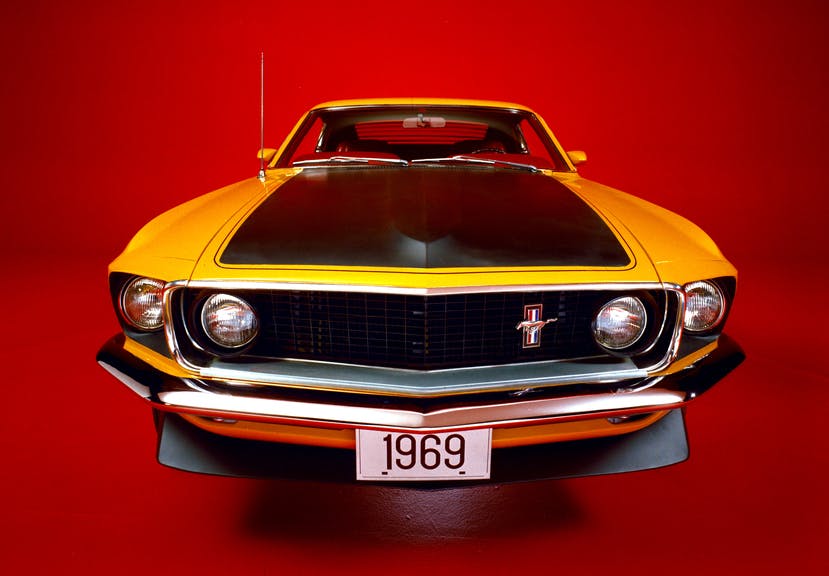
The 2024 Dark Horse has the goods to turn the seventh-generation Mustang into a top-tier performer: 500 horsepower, a six-speed manual transmission, MagneRide dampers (if you spec the Handling Pack), a Torsen limited-slip differential, a host of cooling upgrades … the list goes on. There’s even a track-specific model coming soon, dubbed the Dark Horse R, which could prove worthy of yesteryear’s Cobra, Cobra R, and even certain Shelbys.
Speaking of the past, which Mustangs in Ford’s illustrious history are on par with the 2024 Dark Horse? We’ve compiled a list of 11, including at least one Dark Horse–worthy example from each generation. Yes, we even found one from the Mustang II family.
1965 Mustang K-Code
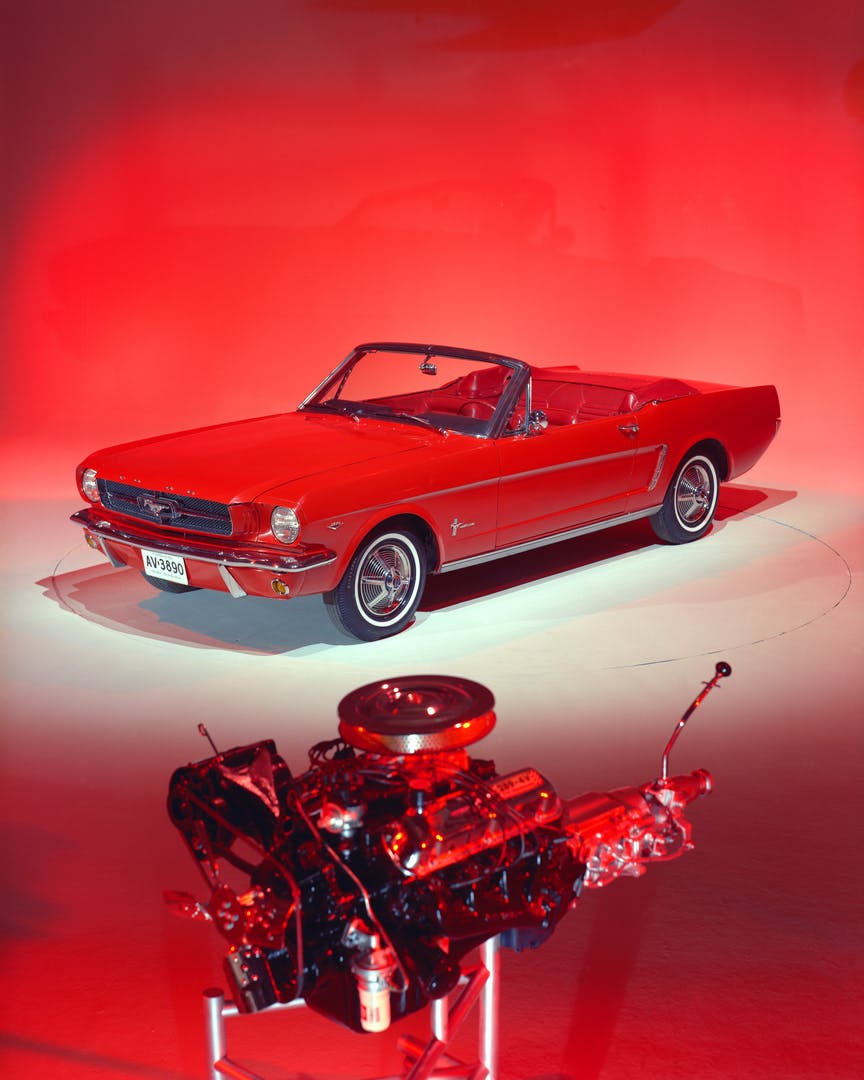
K-code Mustangs changed the way we thought about the original pony car. No longer just a stylish mode of transportation for younger audiences, the K-code option turned the Mustang’s 289-cubic-inch V-8 mill into a high-performance powerplant. A unique emblem sandwiched between the front fender and the 289 badge made it clear a K-Code wasn’t any ‘ol pony. Under the skin were, solid lifters, high-flow cylinder heads, a heavy-duty crank, a larger carburetor, chrome valve covers, and a unique air cleaner.
That said, to be a true forefather to the Dark Horse, a K-code needs a few more options. Get me the GT Package and a limited-slip differential, and have them both installed in a fastback body, please!
1969 Mustang Boss 302
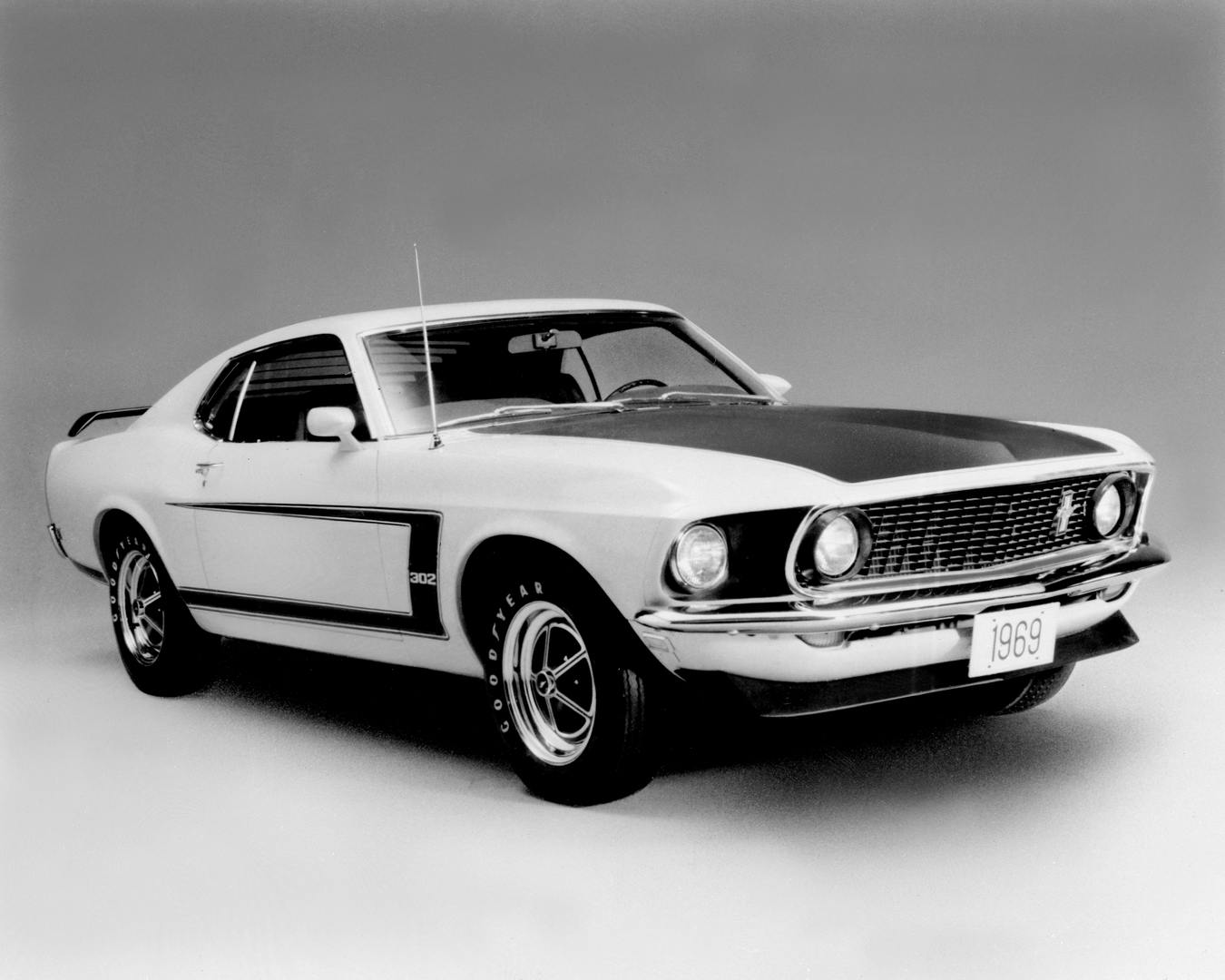
The mission of the 2024 Dark Horse is very much in line with that of the original Boss 302 Mustang, a street car with the Trans Am racing series in its sights. All the requisite hardware came standard in 1969, including the potent small-block V-8, though the choice of a short- or a wide-ratio four-speed manual transmission was up to you. Interior options ranged from mild to wild, depending on whether you needed a street car or a stripped-down track weapon.
1972 Mustang 351 H.O. R-Code
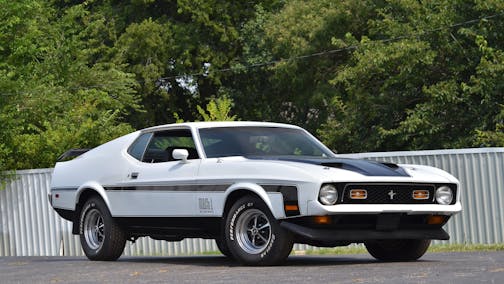
The beginning of the Malaise Era wasn’t kind to any vehicle, but, before the horsepower party ended, Ford made a final push. The 1972 Mustang could be optioned with the R-code motor, also known as the 351 H.O. (for High Output) engine. The V-8 revved well thanks to the big valves of the Cleveland engine family’s cylinder heads, even though compression was slightly lower than that of past Boss 351s. There was a cold-air kit, a top loader four-speed manual, and a mandatory air-conditioning delete to ensure that R-code Mustangs were taken as seriously as possible. Then again, maybe not: The R-code package was a standalone option, meaning any Mustang could have the 351 H.O. engine, including the luxurious Grandé version.
1976 Mustang II Stallion
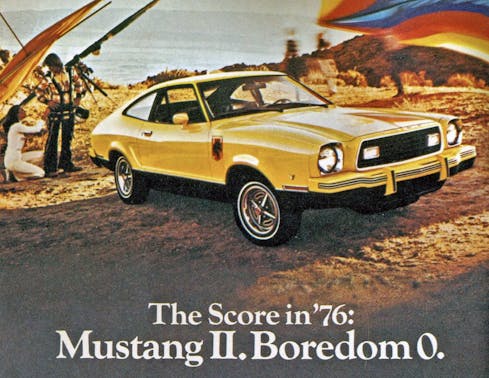
Why must we always justify our appreciation for the Mustang II? It sold amazingly well, turned like a dream, and took a little malaise out of this dark era in automotive history.
Consider the 1976 Mustang II Stallion a Disco Dark Horse, if you will. The Stallion package was pretty simple, mostly just a blackout trim affair and a limited color palette. But it came with a rather delicious decal for the fenders.
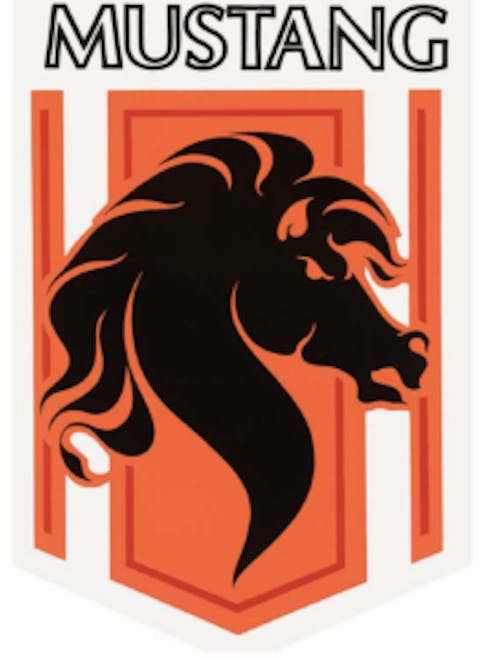
While it may not be as iconic as the Pontiac Trans Am’s screaming hood chicken, the decal was one of many things to like about a Mustang II Stallion, provided you optioned it to your needs and wants. The 1975 model year even brought back the 302-cubic-inch V-8 to the Mustang’s options list. However, the Stallion’s nose-heavy demeanor and mandatory automatic might not be ideal for a predecessor to the Dark Horse. Also, if we imagine ourselves in the 1970s, we need to save money on fuel, right?
Consider a Stallion trim package with the slim and efficient Cologne V-6, a four-speed manual, and the Rallye Package’s limited-slip differential, refined suspension, and upgraded cooling. And if you add the forged aluminum wheels for less unsprung weight? Well, you just made a Dark Horse for the Dark Ages of Motoring.
1983 Mustang GT Turbo

Dare I suggest it? The Fox-body Mustangs were a high-performance revelation in an era of lower emissions and higher safety standards. You should never forget about the stealthy 5.0-liter Mustang LXs, especially the notchback sedans, but, in this case, there’s a turbocharged Fox Mustang that deserves more recognition.
The 1983–84 Mustang GT Turbo had the same suspension, interior and cosmetic upgrades as a V-8-motivated GT, but had a turbocharged and fuel-injected version of the Mustang’s 2.3-liter overhead-cam motor. GT Turbos were similar to the Thunderbird Turbo Coupe, which might be why Ford squeezed it into production before the similar (but wholly superior) Mustang SVO made the T-Bird pointless sometime in 1984.

Will the Dark Horse will be a flash in the pan? Or does the Dark Horse have more staying power than either the GT Turbo or the Mustang SVO? If so, please accept our apologies.
1993 Mustang SVT Cobra
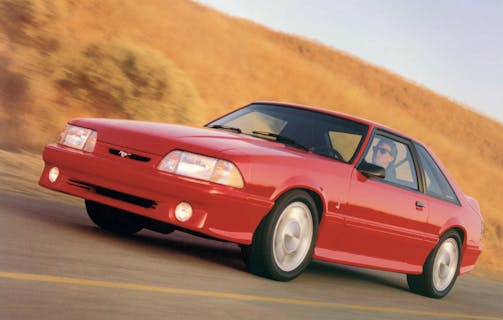
Turbocharged Fox-body Mustangs are fine and dandy, but let’s face facts: the 5.0-powered Mustang Cobra is the best 1980s analogue to today’s Dark Horse. The exterior upgrades are on point, as are the impressive upgrades to braking, suspension, and acceleration. The 1993 Cobra was a finesse player, especially in its refined suspension tuning: Odds are the improvements here are on par with those of the new Dark Horse.
1995 Mustang GTS
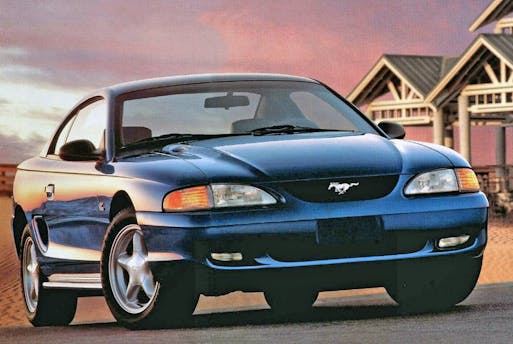
The 1994–2004 (SN-95) Mustang was the foundation for a vehicle that might be just as special as the new Dark Horse, but for a completely different reason: Instead of adding things to improve on the Mustang’s winning formula, the 1995 Mustang GTS deleted as many things as possible.
Power windows, power locks, and those heavy articulated bucket seats from the GT? In the dumpster. The GT’s rear spoiler, fog lights, 17-inch wheels, and antilock brakes? No thanks! Simplicity was the beauty of the Mustang GTS, even if it was officially on the books for a single model year. The GTS lived on as a bare-bones Mustang GT until 1998, which could foretell the Dark Horse’s future: some of the special bits (or lack thereof) might be fused into a mere Mustang GT come model-year 2025. Only time will tell …
2003 Mustang SVT Cobra
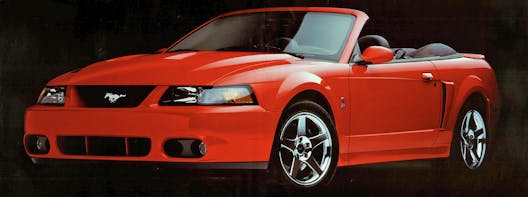
Again, like the 1993 Mustang Cobra for Fox-bodies, the 2003–2004 “Terminator Cobra” is the ultimate expression of the SN-95 Mustang. But the Terminator’s changes are even more radical than the Dark Horse’s improvements.
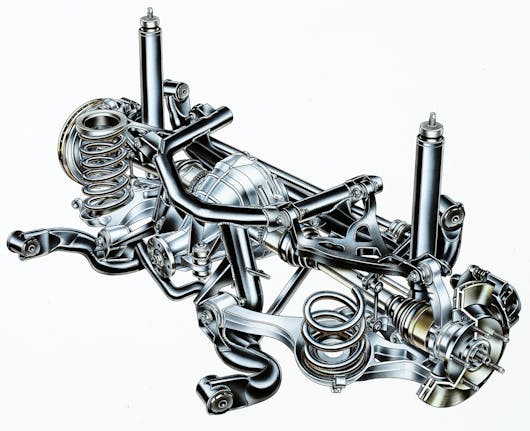
There’s the independent rear suspension, a supercharged 4.6-liter V-8 with 32 valves and four camshafts, a six-speed manual, and improved steering and suspension tuning. This is all the stuff of dreams for a mere 16-valve, stick-axle Mustang GT. Considering the Terminator’s absolutely radical engineering—at least, for a mainstream Mustang—does it really have any peer?
2008–09 Shelby GT500KR
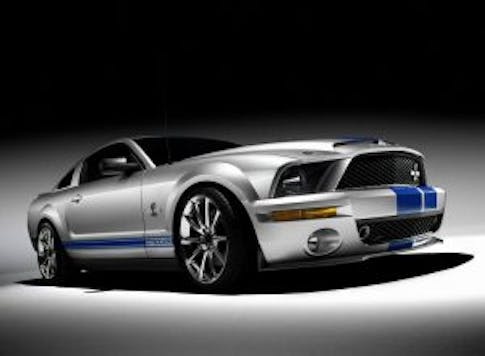
The fifth generation (S197) Mustang was a solid performer out of the box, and the 2007 Mustang Shelby GT500 was a worthy tribute to the Terminator Cobra. But there was something even better in this era, a car that sported the requisite number of tweaks to make it the Dark Horse Mustang of 15 years ago. Meet the 2008 Shelby GT500KR. The KR was indeed the “King of the Road” as it had more power, more gearing, a unique hood, and a revised suspension over the already impressive hardware found in a “mere” GT500.
In some ways, the GT500KR is the perfect Dark Horse throwback, as the 2024 GT promises to be a serious performer just like a “regular” 2008 GT500. We might have multiple Kings of the Road on our hands now!
2012 Laguna Seca Boss 302

If we opened the door with the improvements between the GT500 and GT500KR in the S197, aren’t we honor-bound to do the same thing for the Boss 302 and the Boss 302 Laguna Seca? The Laguna Seca edition added Recaro seats, a Torsen differential, revised suspension tuning, grippy tires, brake cooling, and a deletion worthy of the GTS: the back seat was removed and a chassis brace was put in its place.
2020 Mustang EcoBoost High Performance Package
Much like the Mustang SVO of the 1980s, the EcoBoost HPP (High Performance Package) raided Ford’s parts bin to make a truly impressive vehicle that few remember even a mere three years later. This four-cylinder Mustang was no slouch, with 330 horses (presumably using tuning from the Focus RS hatchback) and the brakes and aerodynamic enhancements from Performance Packages available on its eight-cylinder brother. There was even an optional “EcoBoost Handling Package” with MagneRide dampers, a Torsen differential, wider wheels, a thicker rear sway bar, and sticky Pirelli summer tires. Four cylinders be damned, this Mustang is absolutely worthy of Dark Horse comparisons.
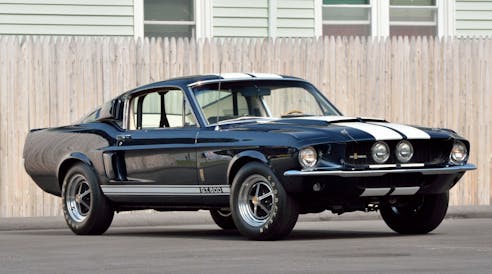
But there can’t possibly be only 11 predecessors to the new Dark Horse. What other Mustangs cast a shadow long enough to reach Ford’s latest “shade-throwing” performance icon? You tell us.
***
Check out the Hagerty Media homepage so you don’t miss a single story, or better yet, bookmark it. To get our best stories delivered right to your inbox, subscribe to our newsletters.
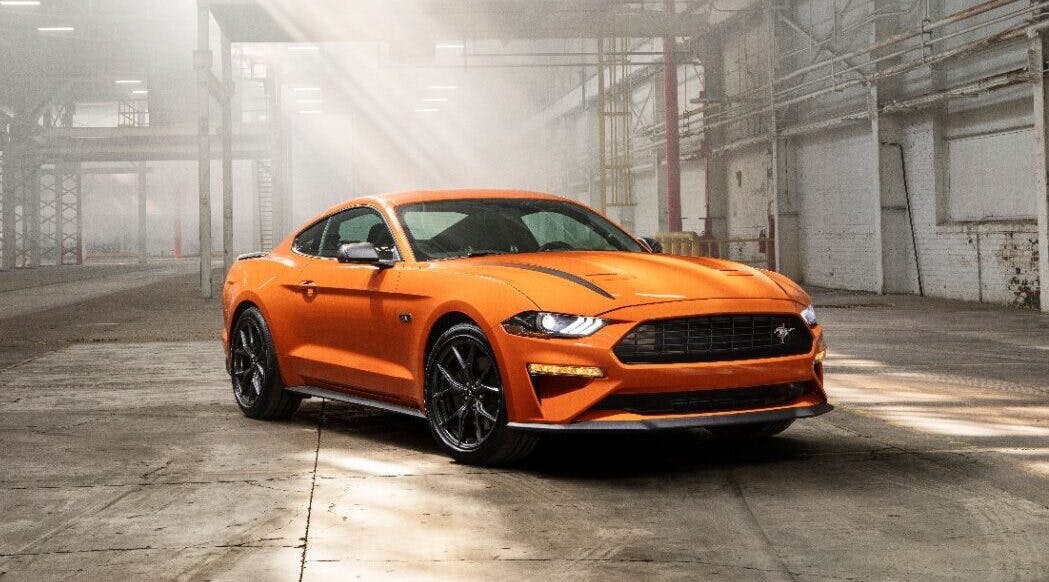
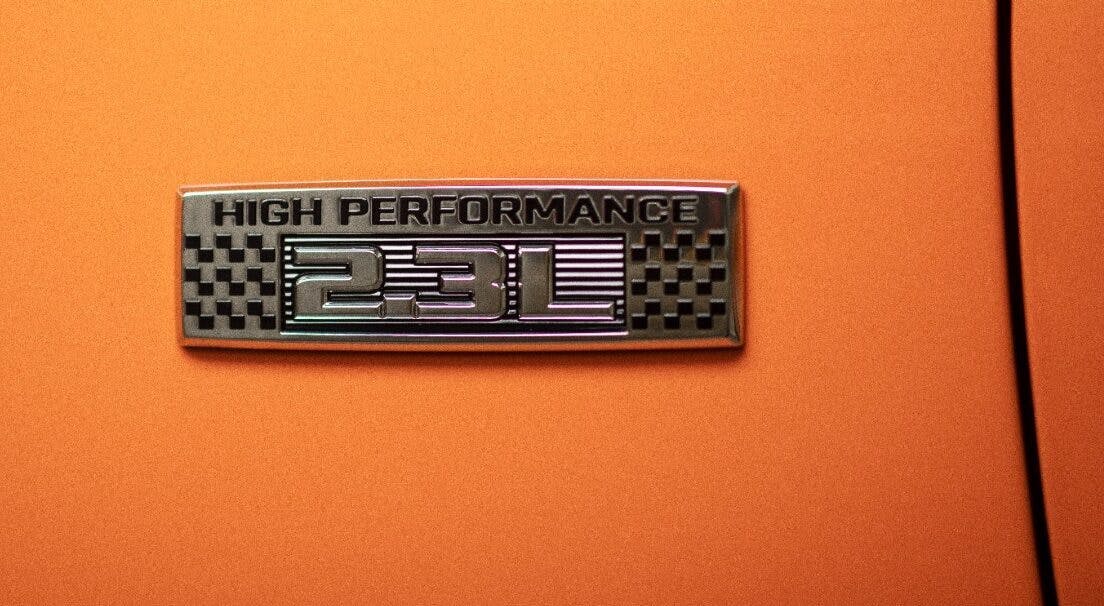


Gotta love Hagerty, They set up the dart board (any article about Mustangs) and then let the faithful readers throw dart after dart.
Keep up the good work, H
(from a ‘Stang owner)
The 5.0 V8 in the mustang ll made 130 hp. The 2.3 liter 4 cyl in the ecoboost mustang made 330 HP. Let that sink in….
A fun comparison of Mustangs through the generations. It’s always fascinating to relive both how the environmental pressures, budgets, and technology limitations of each generation resulted in the models Ford was able to produce. As much as I and others love certain vintage Mustangs, it’s always difficult to top the latest iterations, at least in terms of overall performance. 500 horsepower from a 5 liter V-8? Stop and think about that from a minute…1g plus in lateral acceleration numbers…track performance that equals or surpasses race prepped Mustangs of old…in a street version…appreciate the old, but there really isn’t a comparison.
This isn’t a list of all the great and powerful Mustangs. It’s supposed to be a list of Mustangs that contributed items to what makes the Dark Horse. And I think there was a purposeful draw from a Mustang of every era. So, if one wants to argue that a certain Mustang was missed, one should explain which Mustang on the list it should replace, and why. Include what parts the suggested replacement has that better contributes to the Dark Horse.
I never seen the 1967 stallion made in T.O for one year
“Mustang SVO made the T-Bird pointless sometime in 1984.” Nonsense !
Had an 87 & an 88 Turbo Coupe . . . more Aero than the SVO, longer wheelbase made for much better handling, great ABS & the 51/49 weight bias was almost perfect. Drove them all . . . no contest the T-bird wins. Ride was better, bigger trunk and more luxury. Jackie Stewart said they were better than the 3 Series, Ford should have released in Europe.
Luv the Laguna Seca Boss 302, and the 65 K Code . . . but would have to choose the 08 KR so I could park it beside it’s grandfather . . .
This writer really missed the mark. Don’t know why, but he put some real losers on his list, and omitted some better choices. And a Mustang II? He’s as bad as that guy John Clor, who thinks the II is the greatest Mustang of all time. Terrible article.
Hi-Po 289 did not have high flow cylinder heads. Same tiny ports and valves on all 289’s. The K-code heads got screw-in rocker studs and upgraded valve springs to handle the hotter camshaft.
Mustang II was a good blank canvas for 351W swap, and they appear nice when tubbed for prostreet. The interior was more plush and put together better than previous Mustangs.
That is the extent of interest from the same era that concocted the Escort EXP with parachute shaped headlights designed to slow the cars
Does the name Steve McQueen ring a bell.
Does Steve McQueen ring a bell.
The ’67 427 is omitted, and a special note about the ’83 – ’85 Mustangs used by state police as pursuit vehicles.
My 1967 Shelby GT350 with a Paxton Supercharger could be included on your list.